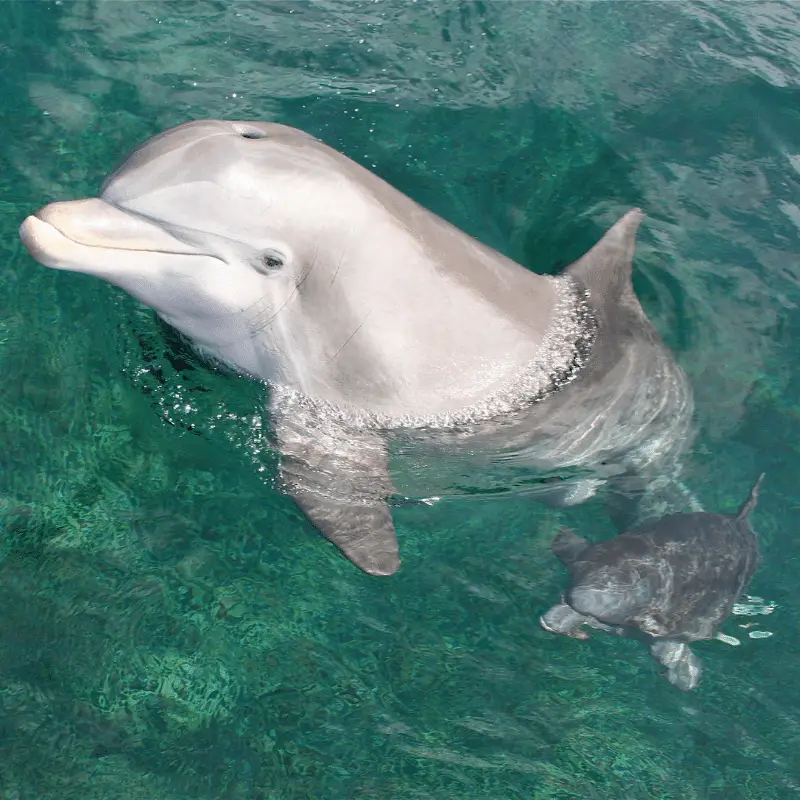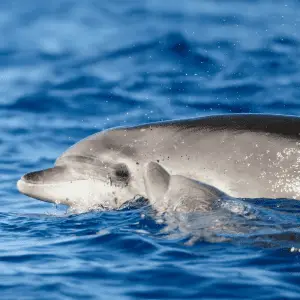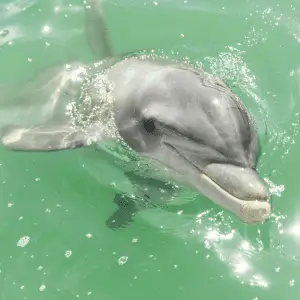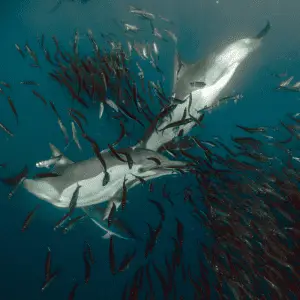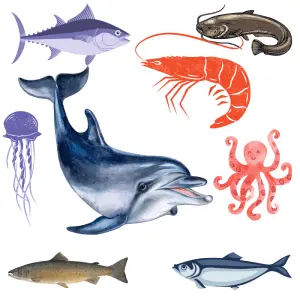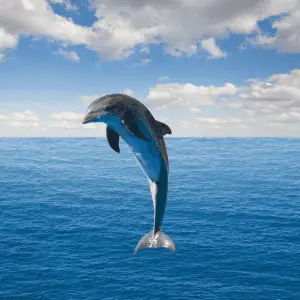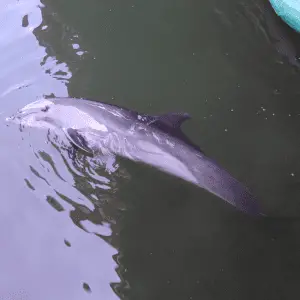Baby dolphins are called calves. Even though they live in the water, they are not fish. Dolphins are aquatic mammals, and like other mammals, they give birth to live young. The male dolphins are called bulls, and the female are called cows.
Now we know the name of a baby dolphin. Let’s learn about the pregnancy of a dolphin and more about when the calves are born.
How long are dolphins pregnant?
The length of the pregnancy among dolphins can vary significantly depending on the species. The average mother dolphin carries their young for about ten months. However, the pregnancy of an Orca tends to last for 18 months.
How many babies does a dolphin have at once?
After a prolonged pregnancy, dolphins generally give birth to a single baby. At birth, the dolphin babies come out tail first.
Tail first is one of the features that does not match most common mammals’ birthing process. The babies of most mammals tend to be born head first.
Why are dolphins born tail first?
The reason why dolphin babies tend to be born tail end first is that they need to start trying to swim right after they are born. Tail first, it would make sense that they need their body before the head to swim up rather than down for a fighting chance. However, most of the time, the mother is there to prop up the dolphin calf from birth until it learns to swim. If the dolphin babies fail to swim after birth, there is always a slight chance of drowning.
How long is a dolphin in labour?
The birthing process of dolphins can vary significantly. However, generally, it takes about a couple of hours to give birth to a baby dolphin. Right after birth, the baby dolphin is utterly dependent on its mother.
At what age do dolphins breastfeed their babies?
Once born, the calf starts to feed on the thick, oily milk from the nipples of its mother within minutes. Then after that, the dolphin calf will feed from the mother dolphin every day until the age of two to three years.
How often
Roughly at an interval of 20 minutes each time and less when older. The dolphin mother keeps feeding her baby until they are independent enough to hunt.
When can calves start catching fish?
Baby dolphins are encouraged to start catching small fish when they are about 5 to 6 months old.
Reproduction
Most dolphins reach sexual maturity at an average of 6 to 8 years. Female dolphins tend to reach sexual maturity faster than males.
Female dolphins become sexually active at any time between 5 to 13 years of age, while male dolphins can reach their sexual maturity when they are between 9 to 14 years of age.
The exciting thing about dolphins is that once they reach sexual maturity, they can reproduce throughout their lives, even in old age.
Continuous reproducing is a unique feature of dolphins you cannot find in other mammals.
Dolphin mothers care for one dolphin at a time until they become independent. That means a dolphin mother can start preparing to give birth to another baby dolphin once the previous baby is weaned completely and prepared for adult life.
A dolphin calf depends on its mothers’ milk for 2 to 3 years. That means a female dolphin can give birth to new baby dolphins once every 3 to 4 years.
The nursing process varies from one dolphin mother to another. There is evidence of dolphin mothers nursing their babies for more than ten years. However, on average, dolphin babies become completely independent when three years of age.
Do dolphins give birth to twins?
Most of the time, dolphins only give birth to one baby dolphin at a time. However, there is known evidence that a dolphin mother has given birth to twins. However, these are very sporadic cases and do not regularly occur.
Why do dolphins give birth to one calf at any one time?
One of the biggest reasons dolphins do not give birth to twins is the amount of energy and attention a dolphin calf requires from its mother. Right after giving birth, the mother dolphin needs to swim continuously in a specific manner so that the newborn baby can keep up with her.
Separation from the dolphin’s mother can make the baby dolphin drown. The baby dolphins do not have any blood under their skin. So they cannot float naturally. As a result, if they do not get assistance from their mother, they can just as easily drown. This specific type of swimming requires a lot of energy, leaving the mother dolphin drained.
Keeping them afloat and nutritionally fulfilled will be challenging if the mother gives birth to more than one baby.
Mother Dolphin Bonding
Right after birth, dolphin babies form a strong bond with their mothers. This bond is crucial for the calf to survive. The dolphin mothers are the calf’s primary caregivers and excellent teachers. Without their mothers’ guidance and help, the dolphin calf can’t survive independently.
Under the close supervision of their mothers, the dolphin babies slowly start learning hunting techniques, social communication methods, and the necessary language skills.
The dolphin mother carefully prepares her baby to enjoy there to be independence.
The mothers also teach the babies how to interact with other pod members and identify the danger signals. They also teach their babies the techniques of roaming around alone.
When are dolphin calves born?
The dolphins do not have any specific breeding period or season. However, most dolphins give birth during the warmer months.
Dolphin Pod Help
The other dolphins also assist the mother during the birthing process, keeping watch from predators. The other pod members often help the mother dolphin and protect her throughout the pregnancy.

